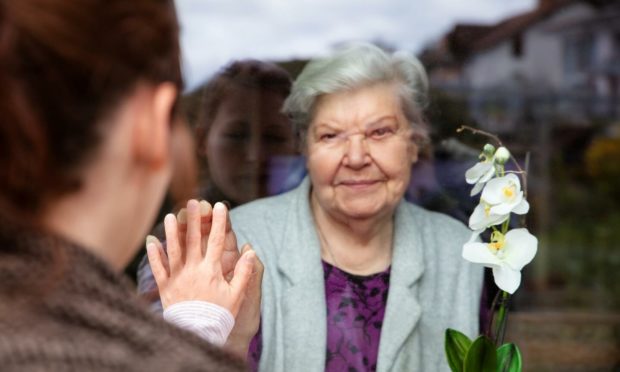New research has revealed people advised to shield were eight times more likely to catch Covid-19.
Shielders were also five times more likely to die from Covid-19 than their non-shielding counterparts.
The study, conducted by Glasgow University, found the shielding programme may not have been as effective at protecting vulnerable people from Covid-19 and reducing the pressure on the NHS as hoped.
Research found, between March and May last year, patients advised to shield in NHS Greater Glasgow and Clyde (NHSGGC) experienced higher rates of infection and death than those not advised to shield.
How effective was shielding?
The study looked at data from over 1.3 million patients registered with GP practices in the area.
Within this group, 27,747 individuals were advised to shield.
A further 353,085 individuals were not advised to shield but researchers found them to be at medium risk of Covid-19 due to health conditions such as diabetes.
The study found that, compared to low-risk individuals, those who were advised to shield were eight times more likely to have confirmed infections.
Those advised to shield were five times more likely to die following confirmed infection.
Moderate-risk individuals were four times more likely to have confirmed infections than the low-risk group, and five times more likely to die following confirmed infection.
The study also found that those older than 70 accounted for 49.55% of deaths.
Why did this happen?
In the shielding group, there were 299 (1.1%) confirmed infections and 140 (0.51%) deaths from Covid-19.
For those in the moderate risk group, there were 1,859 (0.53 %) confirmed infections and 803 (0.23%) deaths.
In the low-risk group, there were 1,190 (0.13% confirmed infections) and 84 (0.01%) deaths from Covid-19.
Therefore, compared with the low-risk group, shielders were eight times more likely to become infected with the virus and five times more likely to die.
‘Shielding should be used alongside other measures’
Professor Jill Pell is director of Glasgow University’s Institute of Health and Wellbeing.
Prof Pell said: “Our study highlights that to effectively protect high-risk individuals, shielding should be used alongside other population-wide measures such as physical distancing, face coverings and hand hygiene.
“Our study also showed that shielding may be of limited value in reducing burden on health services because, in spite of the shielding strategy, high risk individuals were at increased risk of death.
Shielding those at highest risk from #COVID19 during the first wave of the pandemic may not have been as effective at protecting them from infection and death as hoped.
Read more➡️https://t.co/Qto2yVEMnz pic.twitter.com/PVgFVqOgjg
— University of Glasgow (@UofGlasgow) July 27, 2021
“We believe that, to be effective as a population strategy, shielding criteria would have needed to be widely expanded to include other criteria, such as the elderly.”
The elderly population were considered ‘clinically vulnerable’ to Covid-19, however only those deemed ‘clinically extremely vulnerable’ were contacted and advised to shield.











